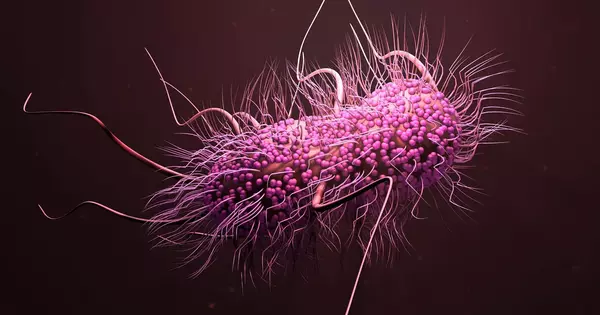In hospitals, hospital-acquired infections, including those caused by antibiotic-resistant superbugs, are a major concern. It is critical to develop effective strategies for combating these infections in order to protect patients and prevent the spread of dangerous bacteria. The use of bacteria-killing materials is one potential solution to this problem.
Researchers developed a new antimicrobial coating material that effectively kills bacteria and viruses such as MRSA and SARS-COV-2 using a common disinfectant and antiseptic.
The researchers from the University of Nottingham’s School of Pharmacy used chlorhexidine, which is commonly used by dentists to treat mouth infections and for pre-surgical cleaning, to coat the polymer acrylonitrile butadiene styrene (ABS). According to the new study published in Nano Select, this new material was discovered to be effective in killing the microbes responsible for a variety of infections and illnesses and could be used as an effective antimicrobial coating on a variety of plastic products.
From intravenous bags and implantable devices to hospital beds and toilet seats, plastics are widely used in medical settings. Some microbial species can survive in a hospital setting despite enhanced cleaning regimes, increasing the risk of patients contracting infections that require antibiotic treatment while in the hospital. These microorganisms can survive and remain infectious on abiotic surfaces, including plastic surfaces, for long periods of time, sometimes months.
Research has shown that contaminated surfaces, including plastic surfaces, can act as a reservoir of antimicrobial resistance genes, encouraging the spread of antimicrobial resistance across bacterial species through horizontal gene transfer despite deep cleaning practices.
Dr. de Cogan
“Because plastic is such a widely used material that we know can harbor infectious microorganisms, we wanted to investigate a way to use this material to destroy the bacteria,” said Dr Felicity de Cogan, Assistant Professor in Pharmaceutical Science of Biological Medicines. “We accomplished this by bonding a disinfectant with the polymer to create a new coating material, and we discovered that it not only acts quickly, killing bacteria in 30 minutes, but it also does not spread into the environment or leach from the surface when touched. Making plastic items from this material could help combat antibiotic resistance and reduce hospital-acquired infections.”
The researchers examined the material at the molecular level using a technique known as Time-of-Flight Secondary Ion Mass Spectrometry (TOF-SIMS). This revealed that the material was antimicrobial and quickly killed microbes, and the surfaces were still free of these microbes after 45 minutes. It also worked well against SARS-COV-2, with no viable virions detected after 30 minutes. Furthermore, the surfaces were effective in killing chlorhexidine-resistant bacteria strains.

The COVID-19 pandemic has focused attention on hospital-acquired infections, as it is estimated that 20% of all COVID-19 patients were infected while already in the hospital. It is estimated that 4.7% of adult hospital inpatients contracted an infection while in the hospital in 2016/17, with 22,800 patients dying as a result of these infections, despite the fact that these deaths could have been avoided.
Escherichia coli, Staphylococcus aureus, and Clostridium difficile are the most common pathogens that cause hospital-acquired infections. Infection outbreaks in clinics are frequently caused by strains that are resistant to antimicrobial drugs.
“Research has shown that contaminated surfaces, including plastic surfaces, can act as a reservoir of antimicrobial resistance genes, encouraging the spread of antimicrobial resistance across bacterial species through horizontal gene transfer despite deep cleaning practices,” Dr. de Cogan continues. “It is critical that new technologies be developed to prevent the spread of pathogenic microorganisms to vulnerable patients and to address the growing threat of antimicrobial resistance. This study provides an effective method for doing so, and the material could be added to plastic materials during manufacturing or used as a spray.”





